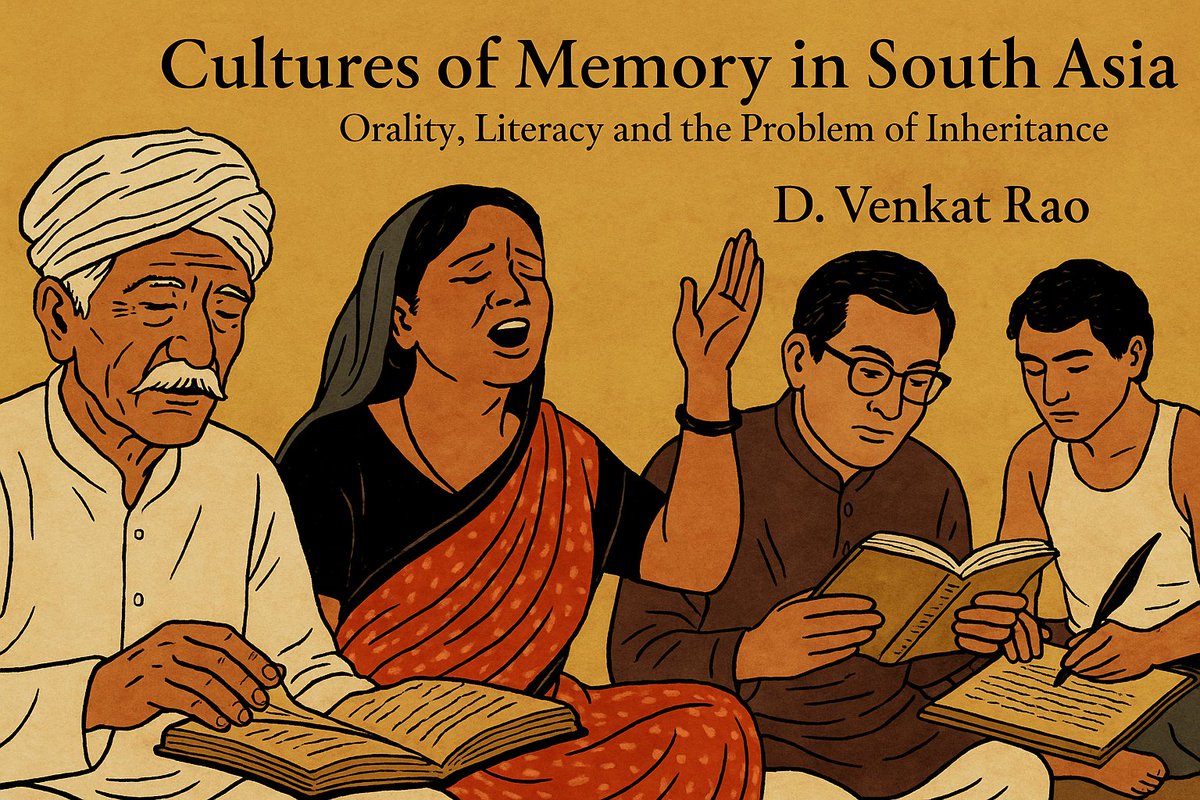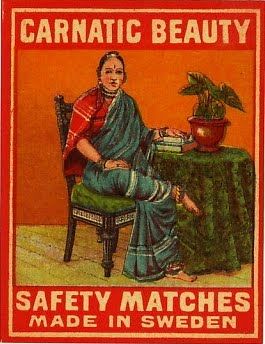
Education | Public Policy | Management @IIMAhmedabad
Curating (@insideout_ed)
@Localism_India (https://t.co/o4RSNICCRP) and work @brhat_in
3 subscribers
How to get URL link on X (Twitter) App


 He starts with Ambedkar’s 1951 resignation letter.
He starts with Ambedkar’s 1951 resignation letter. 
 Modern psychology, economics, even development policies assume that humans are needy beings.
Modern psychology, economics, even development policies assume that humans are needy beings.
 We inherit the humanities as a grand civilizational archive. It speaks of reason, beauty, freedom, ethics.
We inherit the humanities as a grand civilizational archive. It speaks of reason, beauty, freedom, ethics.
 Intellectual parasitism is not mimicry. It is dispossession.
Intellectual parasitism is not mimicry. It is dispossession.
 In pre-colonial South India, women—across many castes—often went bare-chested. This was not seen as shameful. It was part of local aesthetics, climate, and caste codes. Modesty had a different meaning.
In pre-colonial South India, women—across many castes—often went bare-chested. This was not seen as shameful. It was part of local aesthetics, climate, and caste codes. Modesty had a different meaning.

 Kautilya's Arthasastra confirms that an expertise in planting trees, shrubs and curating gardens was recognised.
Kautilya's Arthasastra confirms that an expertise in planting trees, shrubs and curating gardens was recognised. 
 In 1891, the Swedish safety match company, Jönköpings Tändsticksfabrik, started exporting these safety matches to India under the brand name "Swedish Safety Matches."
In 1891, the Swedish safety match company, Jönköpings Tändsticksfabrik, started exporting these safety matches to India under the brand name "Swedish Safety Matches." 
 Its borders included modern-day Indonesia, Singapore, Malaysia, Brunei, southern Thailand, Timor Leste, and the southwestern Philippines, and it is regarded as one of the greatest and most powerful empires in Indonesian and Southeast Asian history.
Its borders included modern-day Indonesia, Singapore, Malaysia, Brunei, southern Thailand, Timor Leste, and the southwestern Philippines, and it is regarded as one of the greatest and most powerful empires in Indonesian and Southeast Asian history.

 It all began somewhere in May 1916, during the First World War. At the time, Mysore was the world's largest producer of sandalwood.
It all began somewhere in May 1916, during the First World War. At the time, Mysore was the world's largest producer of sandalwood. 

 In Indonesia today, Sindhis number no more than 10,000 among a total population of 260 million, and although they constitute a small diaspora community, their economic footprint is significant.
In Indonesia today, Sindhis number no more than 10,000 among a total population of 260 million, and although they constitute a small diaspora community, their economic footprint is significant.
 According to Orwell, a young Englishman could come to India and immediately “kick grey-haired servants.”
According to Orwell, a young Englishman could come to India and immediately “kick grey-haired servants.”

 The princely states of Travancore and Baroda made admirable contributions to public education at the turn of the twentieth century. In 1920–21, only 1 in 6 children in British-administered territories attended school, whereas in these states, two out of every three children did.
The princely states of Travancore and Baroda made admirable contributions to public education at the turn of the twentieth century. In 1920–21, only 1 in 6 children in British-administered territories attended school, whereas in these states, two out of every three children did.

 The talk was centred around the transformation that India has experienced in the last decade in terms of it fast transforming into a digital society, developing independent foreign policy outlook, economic recovery, and running the world's largest food security scheme.
The talk was centred around the transformation that India has experienced in the last decade in terms of it fast transforming into a digital society, developing independent foreign policy outlook, economic recovery, and running the world's largest food security scheme. 


 The number of patents filed in India has gone up from 39,400 in 2010-11 to 45,444 in 2016-17 to 58,502 in 2020-21 and the patents granted in India have gone up from 7,509 to 9,847 to 28,391 during the same time period. These numbers have come from the residents than MNCs.
The number of patents filed in India has gone up from 39,400 in 2010-11 to 45,444 in 2016-17 to 58,502 in 2020-21 and the patents granted in India have gone up from 7,509 to 9,847 to 28,391 during the same time period. These numbers have come from the residents than MNCs.